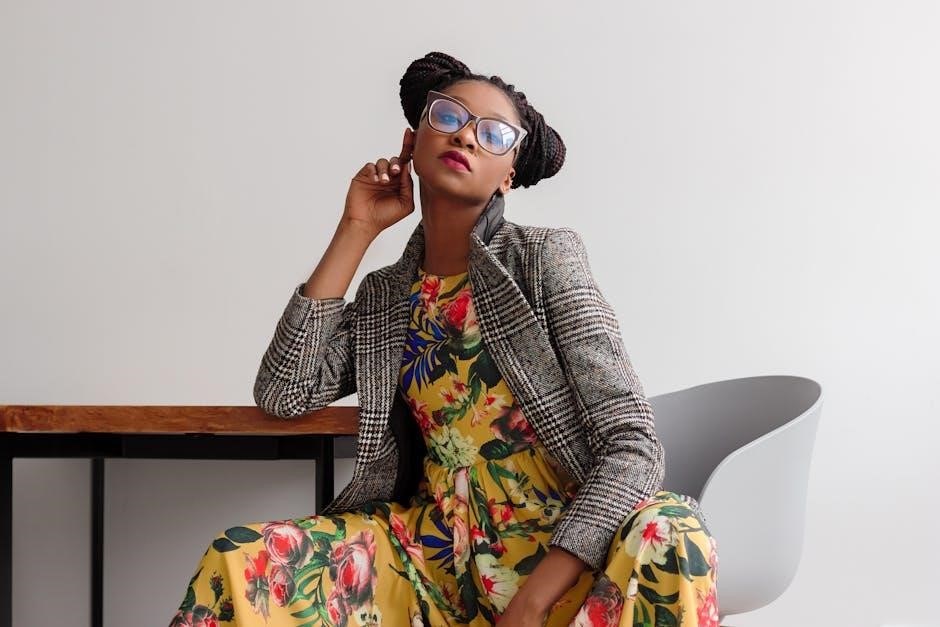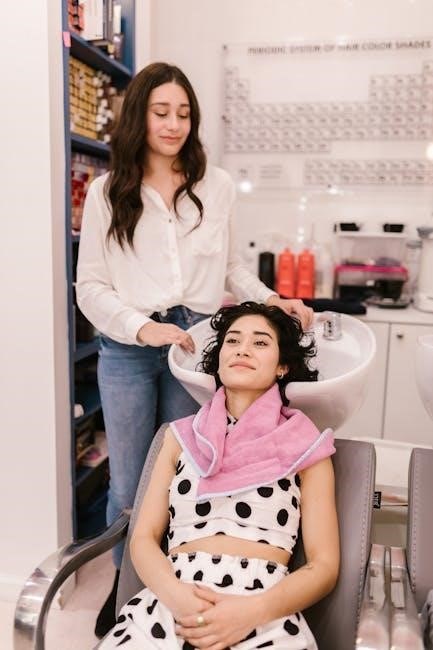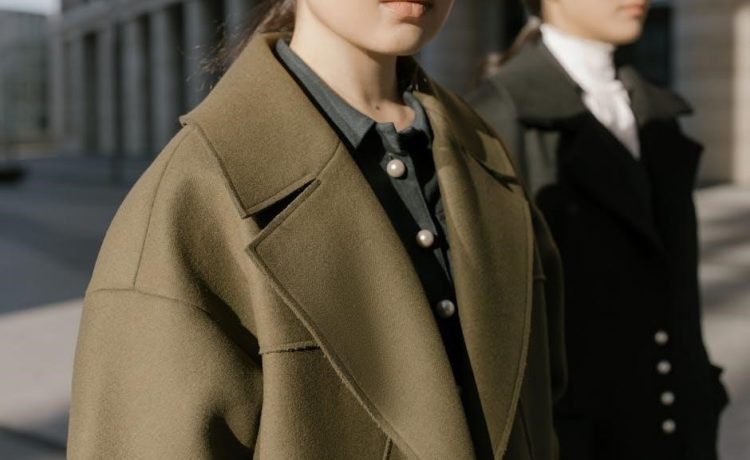Understanding the Importance of Ladies’ Clothing Size Guides
Understanding ladies’ clothing size guides is crucial for ensuring a perfect fit, avoiding returns, and boosting shopping confidence. Accurate sizing enhances comfort, style, and wardrobe satisfaction, making it essential for every woman.
Why Accurate Sizing Matters for Women’s Clothing
Accurate sizing is vital for women’s clothing as it directly impacts comfort, confidence, and the overall shopping experience. Proper fit ensures garments drape well, flatter the body, and meet personal style expectations. Incorrect sizes can lead to discomfort, returns, and wasted time. Using size charts and measurements helps women find clothes that fit perfectly, reducing the hassle of exchanges and boosting satisfaction. Accurate sizing also fosters confidence, allowing women to feel their best in what they wear, whether shopping online or in-store.
How to Avoid Common Fitting Issues
To avoid common fitting issues, start by taking accurate body measurements and comparing them to size charts. Always check the fabric type, as stretchiness can affect fit. Try garments on if possible, and consider the style’s intended silhouette. Pay attention to reviews for insights on how items fit others. If shopping online, use tools like Fit Finder to minimize size guesswork. Understanding your body shape and how fabrics drape can also help ensure a flattering, comfortable fit every time.
The Role of Size Charts in Online Shopping
Size charts play a vital role in online shopping by helping women choose the right fit without trying garments on. They provide detailed measurements for each size, reducing guesswork and minimizing returns. Accurate size charts boost customer confidence and satisfaction, as they ensure a better fit. Many brands also offer Fit Finder tools, which use body measurements to recommend sizes. By referencing size charts, shoppers can make informed decisions, eliminating the frustration of ill-fitting clothes and enhancing their overall online shopping experience.
Regional Variations in Women’s Clothing Sizes
Women’s clothing sizes vary significantly across regions, with different standards in the US, Europe, and UK. Brands often list local sizes alongside their own to aid global shoppers.
US vs. European vs. UK Sizing Standards
US, European, and UK sizing standards differ significantly, impacting fit and shopping experiences. US sizes are less standardized, with variations across brands, while European sizes are more consistent. UK sizes often align with European standards but may differ slightly. These discrepancies can confuse shoppers, especially when buying internationally. Understanding these variations is key to selecting the right size and ensuring satisfaction with purchases.
Using size charts and measuring tools helps bridge these gaps, allowing women to find their best fit regardless of region. Consistent sizing enhances shopping confidence and satisfaction.
Understanding Local Sizing for Global Brands
Global brands often adapt sizing to local standards, ensuring consistency across regions. This approach helps customers shop confidently, as sizes align with regional fit expectations. Local sizing adjustments account for body type differences, fabric preferences, and cultural perceptions of size. Brands may list corresponding local sizes alongside global measurements to simplify shopping. Understanding these adaptations is crucial for accurate fit, especially when purchasing from international retailers. Always refer to size charts for the best results.
- Local sizing ensures better fit for diverse body types.
- Brands adapt measurements to regional preferences.
- Size charts remain the most reliable tool for accuracy.
Measuring Yourself for the Perfect Fit
Accurate self-measurement is key to finding your size. Measure bust, waist, and hips with a tape measure to ensure proper fit and alignment with size charts.
Essential Measurements for Women’s Clothing
Key measurements for women’s clothing include bust, waist, and hips. Accurate bust measurements ensure proper fit for tops and dresses, while waist and hip measurements guide pants and skirt sizing. To measure correctly, stand straight and keep the tape measure level. Bust is measured around the fullest part, waist at the narrowest point, and hips 7-9 inches below the waistline. These measurements help align with size charts, ensuring a flattering and comfortable fit across various brands and styles.
How to Use a Tape Measure Correctly
Using a tape measure correctly ensures accurate clothing sizes. Stand straight, keep the tape level, and avoid slouching. Measure the bust at the fullest point, waist at the narrowest, and hips 7-9 inches below the waistline. The tape should be snug but not tight, forming a parallel line to the floor. Proper measurement avoids fitting issues and helps match size charts effectively. Consistent technique guarantees reliable results for a perfect fit in any garment.

Factors Influencing Women’s Clothing Sizes
Body shape, fabric type, and brand-specific sizing standards significantly impact women’s clothing sizes. Variations in fit and measurements across brands can affect size accuracy and comfort.
Body Shape and Its Impact on Sizing
Body shape plays a significant role in determining clothing sizes, as different shapes require tailored fits. Common shapes include inverted triangle, pear, hourglass, and rectangular. Measurements vary across bust, waist, and hips, affecting how garments fit. For example, an inverted triangle may need a smaller top size but a larger bottom size. Understanding your body shape helps in selecting styles that flatter and fit well, ensuring comfort and confidence. Accurate measurements and size charts are essential for overcoming fit challenges.
Fabric and Fit: How Material Affects Size
Fabric type significantly influences clothing fit, as different materials have varying stretch and drape. For instance, stretchy fabrics like cotton blends or denim may fit differently than rigid fabrics like silk or linen. Understanding how fabrics behave helps in choosing sizes that accommodate their texture and flexibility. Always consider the fabric when using size charts, as the same size can fit differently across materials. This ensures a comfortable and flattering fit, minimizing the need for returns or alterations.

Common Challenges in Determining Women’s Clothing Sizes
Key challenges include inconsistent sizing across brands, unclear size charts, and how fabric affects fit. These issues often lead to ill-fitting clothes and frustrating returns for shoppers.
Size Inconsistency Across Brands
One major challenge is size inconsistency across brands, as each brand may follow different sizing standards. This variability often leads to confusion, as a size 8 in one brand may fit differently in another. Factors like fabric stretch, cut, and measurement methods contribute to these discrepancies. To address this, many brands now provide detailed size charts and fit guides, while some offer tools like Fit Finder to help determine the best size based on individual measurements. Consistency remains a significant issue, but technology is helping bridge the gap.
Navigating Returns and Exchanges
Navigating returns and exchanges is a common challenge due to size inconsistencies. Many women face the hassle of sending back ill-fitting items, which can be time-consuming and frustrating. To simplify this process, brands often provide clear size charts and fit guides to help customers make accurate choices. Additionally, some retailers offer free returns or extended return periods, reducing the risk of keeping items that don’t fit. Using tools like Fit Finder can also minimize the need for exchanges, ensuring a smoother shopping experience.

Using Technology for Better Size Accuracy
Technology enhances size accuracy with Fit Finder tools, apps, and virtual try-ons, ensuring perfect fits and minimizing returns for a better shopping experience.
Fit Finder Tools and Their Benefits
Fit Finder tools revolutionize clothing size accuracy by allowing users to input precise measurements, providing personalized size recommendations. These tools reduce guesswork, minimizing returns and exchanges. By leveraging advanced algorithms, they enhance shopping confidence and satisfaction. Many platforms integrate virtual try-ons, enabling visual confirmation of fit. such technologies streamline the sizing process, making online shopping more efficient and enjoyable. They also cater to diverse body types, ensuring a tailored experience for every shopper, ultimately boosting wardrobe satisfaction and reducing fitting frustrations.
Apps for Finding Your Perfect Size
Apps designed to help women find their perfect size are gaining popularity. These tools often use body measurements and algorithms to recommend sizes. Some apps create 3D avatars for virtual try-ons, while others compare measurements across brands. They save time by reducing the need for manual size calculations. Many apps also store measurement data for future purchases, ensuring consistency. This technology enhances shopping confidence and reduces returns, making it a valuable resource for anyone seeking the best fit.
Dressing for Your Body Type
Dressing for your body type involves understanding your shape and choosing styles that flatter it. Whether pear-shaped, hourglass, or inverted triangle, tailored pieces balance proportions. Opt for A-line dresses to skim hips or tailored blazers to enhance shoulders. Focus on wardrobe essentials that highlight strengths and create a polished, confident look tailored to your unique silhouette.
Best Styles for Different Body Shapes
Understanding your body shape is key to dressing flawlessly. Pear-shaped women shine in A-line dresses and flared skirts that balance hips, while hourglass figures flaunt curves in fitted waist dresses. Inverted triangles look great in flared pants and ruffled tops to add volume to the lower half. Rectangular shapes benefit from textured tops and belted dresses for definition. Apple-shaped women should opt for V-necks and high-waisted pants to elongate the torso. Each style enhances unique features, ensuring a flattering fit for every silhouette.

Global vs. Local Sizing
Global sizing varies by region, with US, European, and UK standards differing significantly. Local sizing adapts to regional body types, ensuring a better fit and reducing confusion for shoppers.
How to Shop from International Brands
Shopping from international brands requires understanding regional sizing differences. Always refer to the brand’s size chart and compare it with your measurements. Use conversion guides to align your local size with global standards. Pay attention to fabric types, as fit can vary. Check customer reviews for insights on sizing accuracy. If unsure, consider ordering two sizes and return the one that doesn’t fit. This approach ensures a better fit and reduces the hassle of returns, making cross-border shopping more enjoyable.

How to Read and Use a Size Chart
Align your measurements with the chart, ensuring accurate fit. Compare bust, waist, and hip sizes to find your best match. Check fit recommendations for comfort.
Interpreting Measurements and Sizes
Interpreting measurements and sizes accurately is key to finding the perfect fit. Use a tape measure to record your bust, waist, and hip sizes, then align them with the size chart. Pay attention to the numerical values and corresponding sizes, ensuring consistency across brands. Consider body shape and fabric type, as they influence fit. Utilize fit finder tools or apps to refine your size selection. Always double-check measurements for accuracy to avoid sizing mismatches and ensure a flattering, comfortable fit.

Timeless Styling Tips for Women
Invest in quality over quantity, embrace classic designs, and focus on neutral colors. Tailor clothes to your body shape for a polished look that endures seasons.
Creating a Wardrobe That Fits and Flatters
Building a wardrobe that flatters your figure starts with understanding your body shape and proportions. Invest in tailored pieces that highlight your strengths, like a nipped-in waist for hourglass figures or A-line dresses for pear shapes. Neutral tones and classic styles create versatility, while bold accents add personality. Use size charts to ensure the best fit, and don’t hesitate to tailor items for perfection. Focus on fabrics that drape well and accessorize thoughtfully to complete your look. A well-curated wardrobe boosts confidence and ensures timeless appeal.
